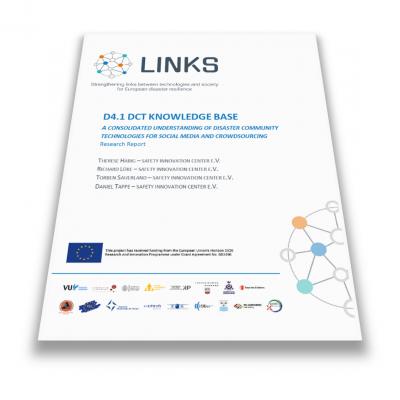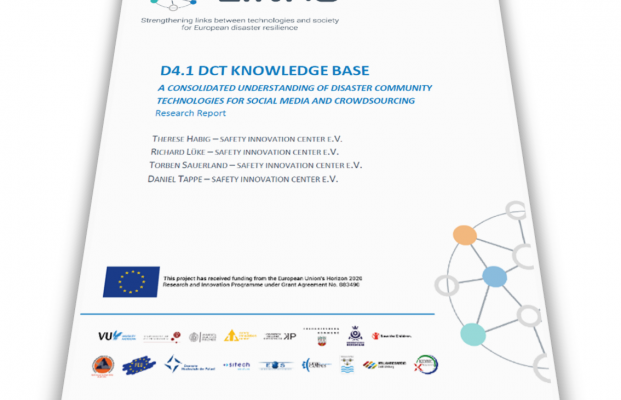
The safety innovation center has made a significant contribution to the progress of the LINKS project (Strengthening Links between Technologies and Society for European Disaster Resilience) by producing the first project report “Disaster Community Technologies Knowledge Base”.
Disaster Community Technologies (DCT) are programs and applications that can be used in crisis situations for communication and coordination of and information gathering from communities. This can be done passively, such as with analysis of social media data, or actively, for example by coordinating volunteers. For example, monitoring news and images from the public about a crisis event would be a crucial help for civil emergency response organizations. This would give the organizations the opportunity to create a faster and more comprehensive picture of a crisis situation.
Both in the literature and in surveys of stakeholders in the project, a substantial need for action in dealing with DCT was identified. Often, the offer on the market is overwhelming since an overview of available technologies as well as their potential is missing. With the aim of filling this gap, a market analysis was carried out. Existing technical solutions (mostly consisting of analysis software of social media networks as well as crowdsourcing applications) were researched and analyzed. With the results, a classification schema (so-called “DCT schema”) was created, e.g. about the functional scope or the primary purpose of the technology. The DCT schema will be further developed with the aim of providing users from practice, research, population, politics and industry with an up-to-date, structured overview of information on existing technologies. It is intended to help map the dynamic market and assist in the selection of suitable software.
The Horizon2020 project LINKS, launched in June 2020, aims to understand and assess impacts of social media and crowdsourcing on European resilience to disasters. Through sustained learning, this will strengthen the links between technologies and society for improved European resilience.
Further information on the project at: http://www.links-project.eu
The reports already published are available at: http://links-project.eu/del
Image source: safety innovation center gGmbH


